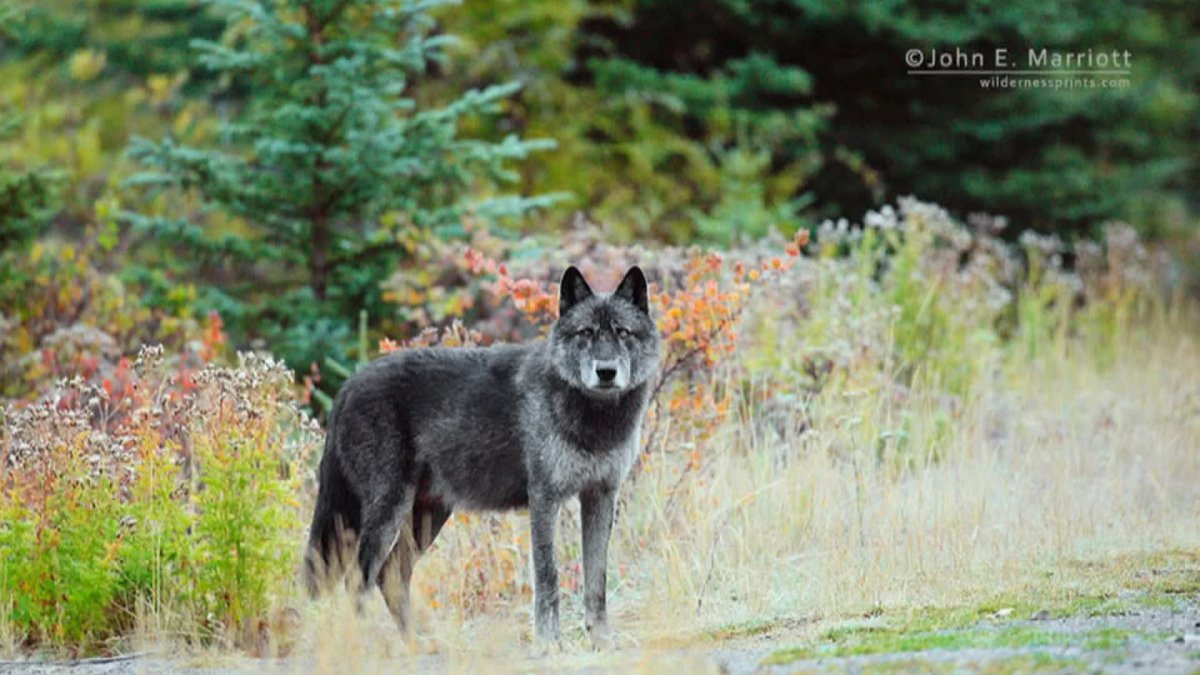Special Series: Wolf Woes
As the population of both people and wolves in Alberta grows, the two groups are increasingly coming into conflict. Global Calgary Reporter Sarah Offin takes a look at what’s behind the conflict, possible solutions and the implications for both people and wolves.
Part 1: Conflict between wolves and humans
Gordy Cunningham has lived on a ranch near Sundre for nearly six decades, but says he’s battling with a group of wolves who have seemingly developed a taste for Alberta beef.
More than 20 calves have been taken from his fields so far this year.
“They have a preference for whatever reason and the calves are easy to get and the dominant wolves seems to decide what they’re going to prey on,” says Cunningham, who complains wolves are costing his business thousands of dollars every year.
“The reality is the wolves are predators they need to eat and they can’t read signs,” says Cunningham. “If we tell them just to eat the elk they don’t obey that.”
The Alberta government estimates there are over 7,000 wolves in the province, and those numbers are continuing to grow.
WATCH: Wolf Hunt part 1
Part 2: Controlling wolf populations
Because Alberta is one of few jurisdictions in North America that still allows wolf bounties, some ranchers are dealing with the booming population by hiring trappers to eliminate packs that prey on their livestock.
“We have a trapper on our lease so he can trap and bate and snare,” says Cunningham.
In Sundre, private hunting and trapping groups now offer bounties, usually about $300 for each wolf killed.
The province defends the practice, saying there is no concern bounties will cause any wolf population decline.
Gordy Klassen is among the best known wolf trappers in Canada, and says his clients are mainly ranchers looking to protect their livestock.
“Wolf populations are just exploding. They’re going up all over,” says Klassen. “That charismatic animal doesn’t look so charismatic when it’s taking away from some farmers living.”
Despite his somewhat controversial occupation, Klassen says he really just wants to help the wolves, hoping his work will help stabilize their population.
“$350 is the most I’ve ever received for a wolf, and $13 is the least,” he says. “And that’s in probably one hundred or two hundred wolves that I’ve shipped out over the years.”
The government doesn’t track the number of wolves killed.
However, the Alberta Wilderness Association, which condemns wolf bounties, estimates at least $192,000 has been paid in municipal wolf bounties with over 640 wolves killed since 2010.
WATCH: Wolf Hunt part 2
Part 3: Curbing the wolf problem
A new movement is spreading through Alberta’s ranching community, in hopes of protecting precious cattle.
Joe Englehart manages over 4,000 heads of cattle on a southern Alberta ranch, and routinely loses dozes of calves to hungry wolves. He has been forced to shoot some on occasion, but it doesn’t stop the problem.
“If you just kill a random wolf out of a pack, you might be killing one of the adults, one of the key components to a pack,” he explains. “Then, you could end up with two packs of wolves instead of one.”
In an effort to curb the problem, he along with other ranchers have come up with a more friendly approach. They are doing things like flagging, and feeding animals at night to keep them in a tighter group.
“Wolves are opportunists. They’ll kill what’s easy to kill,” Englehart adds. “But I think it’s our job as producers to make it a little harder for the wolf to kill a calf.”
Since introducing the new methods, Englehart hasn’t lost a calf to wolves in over six years.
WATCH: Wolf Hunt part 3

